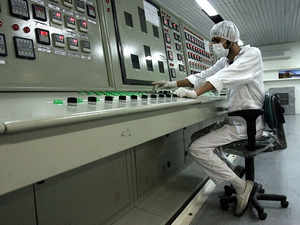
In this February 3, 2007 file photo, an Iranian technician works at the Uranium Conversion Facility just outside the city of Isfahan, Iran, 255 miles (410 kilometers) south of the capital Tehran. Iran says it restarted the production facility in Isfahan, a 'major' uranium facility involved in its nuclear program.
By David E. Sanger and Ronen Bergman
The Mossad agents moving in on a warehouse in a drab commercial district of Tehran, Iran, knew exactly how much time they had to disable the alarms, break through two doors, cut through dozens of giant safes and get out of the city with a half-ton of secret materials: 6 hours and 29 minutes.
The morning shift of Iranian guards would arrive around 7 a.m., a year of Israeli surveillance of the warehouse had revealed, and the agents were under orders to leave before 5 a.m. to have enough time to escape. Once the Iranian custodians arrived, it would be instantly clear that someone had stolen much of the country’s clandestine nuclear archive, documenting years of work on atomic weapons, warhead designs and production plans.
The agents arrived that night, Jan. 31, with torches that burned at least 3,600 degrees, hot enough, as they knew from intelligence collected during the planning of the operation, to cut through the 32 Iranian-made safes. But they left many untouched, going first for the ones containing the black binders, which contained the most critical designs. When time was up, they fled for the border, hauling 50,000 pages and 163 compact discs of memos, videos and plans.
In late April, Prime Minister Benjamin Netanyahu announced the results of the heist, after giving President Donald Trump a private briefing at the White House. He said it was another reason Trump should abandon the 2015 nuclear deal, arguing that the documents proved Iranian deception and an intent to resume bomb production. A few days later, Trump followed through on his long-standing threat to pull out of the accord — a move that continues to strain relations between the United States and European allies.
Last week, at the invitation of the Israeli government, three reporters, including one from The New York Times, were shown key documents from the trove. Many confirmed what inspectors from International Atomic Energy Agency, in report after report, had suspected: Despite Iranian insistence that its program was for peaceful purposes, the country had worked in the past to systematically assemble everything it needed to produce atomic weapons.
No comments:
Post a Comment